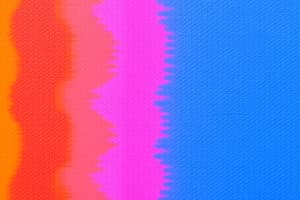Podcast
Questions and Answers
What are secondary colors made from?
What are secondary colors made from?
- Using shades of primary colors
- Combining two primary colors (correct)
- Mixing all primary colors
- Adding white to primary colors
Hue refers to the intensity of a color.
Hue refers to the intensity of a color.
False (B)
Secondary colors like orange can be created by mixing red and ______.
Secondary colors like orange can be created by mixing red and ______.
yellow
What does saturation refer to in terms of color?
What does saturation refer to in terms of color?
A color wheel is used to show the relationships between colors.
A color wheel is used to show the relationships between colors.
What are the primary colors?
What are the primary colors?
Mixing blue and red creates ______.
Mixing blue and red creates ______.
Which of the following best describes 'value' in terms of color?
Which of the following best describes 'value' in terms of color?
Which color scheme uses colors that are next to each other on the color wheel?
Which color scheme uses colors that are next to each other on the color wheel?
A triadic color scheme uses colors that are evenly spaced on the color wheel.
A triadic color scheme uses colors that are evenly spaced on the color wheel.
What is the main characteristic of a monochromatic color scheme?
What is the main characteristic of a monochromatic color scheme?
The color scheme that forms a rectangle on the color wheel is called __________.
The color scheme that forms a rectangle on the color wheel is called __________.
Which of the following is NOT a benefit of using monochromatic color schemes?
Which of the following is NOT a benefit of using monochromatic color schemes?
Complementary colors create a vibrant contrast when used together.
Complementary colors create a vibrant contrast when used together.
What is a common mistake to avoid when using color in design?
What is a common mistake to avoid when using color in design?
Desaturated colors often appear more __________ or businesslike.
Desaturated colors often appear more __________ or businesslike.
What should you do to enhance readability in your design?
What should you do to enhance readability in your design?
What is the primary characteristic of a complementary color scheme?
What is the primary characteristic of a complementary color scheme?
A split-complementary color scheme provides less contrast than a standard complementary color scheme.
A split-complementary color scheme provides less contrast than a standard complementary color scheme.
Name one advantage of using a monochromatic color scheme.
Name one advantage of using a monochromatic color scheme.
Which of the following terms refers to the intensity of a color?
Which of the following terms refers to the intensity of a color?
In a triadic color scheme, the colors are ________ spaced on the color wheel.
In a triadic color scheme, the colors are ________ spaced on the color wheel.
Hue is a term used to describe the lightness or darkness of a color.
Hue is a term used to describe the lightness or darkness of a color.
What is created when two primary colors are mixed together?
What is created when two primary colors are mixed together?
The __________ uses the color wheel to illustrate time-tested color combinations.
The __________ uses the color wheel to illustrate time-tested color combinations.
Flashcards are hidden until you start studying
Study Notes
The Power of Color
- Color significantly impacts design and everyday life, drawing attention and triggering emotional responses.
- Understanding color theory enhances confidence in design choices and everyday color combinations.
Color Basics
- Primary colors are red, yellow, and blue; combining them creates secondary colors: orange, green, and purple.
- The color wheel represents this relationship, including various shades created by mixing these colors.
Key Color Terms
- Hue: Another term for color, e.g., coral pink or light red.
- Saturation: Refers to color intensity; highly saturated colors are brighter, less saturated colors are subtler.
- Value: Describes how light or dark a color is, ranging from black to white.
Creating Color Schemes
- Professional-looking color schemes are achieved through established formulas of color harmony.
Monochromatic
- Uses variations of a single color, ensuring harmony as all colors belong to the same family.
Analogous
- Combines colors adjacent on the color wheel, allowing for personal interpretation and creativity.
Complementary
- Includes colors opposite each other, such as blue and orange; variations can enhance interest.
Split-Complementary
- Takes the colors adjacent to a complementary pair, providing rich contrast with additional color options.
Triadic
- Involves three evenly spaced colors on the wheel, creating bold combinations that require careful application.
Tetradic
- Comprises two pairs of complementary colors, typically balancing one dominant color with others as accents.
Avoiding Common Mistakes
- Some color pairings can appear jarring; adjust lightness, darkness, or saturation to create harmony.
- Prioritize readability; neutral colors can enhance legibility and balance vibrant hues.
Choosing the Right Colors
- Colors convey messages and emotions; select palettes that align with the project's tone and intent.
- Bright colors suggest fun or modernity; desaturated colors may evoke professionalism or seriousness.
Finding Inspiration
- Look for color scheme ideas in various sources, including art, branding, and online palette generators.
- Emulate successful color combinations found in nature or familiar designs, making them your own.
Conclusion
- Color is everywhere and can seem overwhelming; practice and experimentation can make color selection intuitive.
- Continuous learning about color theory will enhance design endeavors and creativity.
The Power of Color
- Color influences design and daily life, capturing attention and evoking emotions.
- Color theory, established by artists and designers, helps in selecting visually appealing color combinations.
- Understanding color increases confidence in design choices and personal style.
Color Basics
- Primary colors (red, yellow, blue) combine to create secondary colors (orange, green, purple).
- Mixing colors produces intermediate shades leading to the formation of a color wheel.
Key Color Attributes
- Hue: Refers to the actual color, such as coral pink or light red.
- Saturation: Indicates the intensity of a color; high saturation equals vibrancy, while low saturation looks muted.
- Value: Describes the lightness or darkness of a color, ranging from black to white, creating various shades.
Creating Color Schemes
- Professional color schemes adhere to principles of color harmony, depicted through the color wheel.
Monochromatic
- Based on variations of a single hue, monochromatic schemes ensure colors match perfectly.
Analogous
- Uses colors adjacent on the color wheel (e.g., reds and oranges), fostering variability in interpretation.
Complementary
- Opposing colors on the wheel (e.g., blue and orange) create vivid contrasts; may benefit from the inclusion of different tones.
Split-complementary
- Involves the two colors adjacent to the complement, enhancing contrast while adding diversity.
Triadic
- Employs three evenly spaced colors on the wheel, creating striking combinations, especially with primary and secondary colors.
Tetradic
- Combines two complementary pairs, favoring one color to dominate the palette, ensuring balance.
Avoiding Common Mistakes
- Vibrating colors may clash; tone down lightness or saturation for harmony.
- Prioritize readability; use neutral colors (black, white, gray) to support color choices and enhance visual impact.
Choosing the Right Colors
- Colors convey messages; bright colors suggest fun, while desaturated colors can appear serious.
- Context plays a role in color perception; practice leads to creativity in color application.
Finding Inspiration
- Sources for color scheme ideas include branding, art, and nature.
- Utilizing web resources for color palette generation can stimulate creativity.
Putting It All Together
- Color is omnipresent; experimentation and understanding color theory can simplify the process of color selection in design.
- Continued practice with color will lead to intuitive design choices over time.
Studying That Suits You
Use AI to generate personalized quizzes and flashcards to suit your learning preferences.




